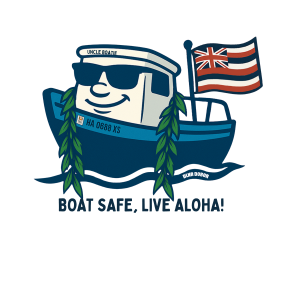Boat Basics
CHOOSING THE RIGHT BOAT
In the United States there are over 2,000 boat manufacturers that produce more than 4,000 different boat models. They are powered by a variety of outboard, stern drive, and inboard engines. Because of this great variety, choosing the right boat can be confusing, but choosing the right boat is an important step to enjoying the nation’s waterways.
In selecting the right boat for your needs, consider the type of activity for which you plan to use it, such as water skiing, fishing, cruising, or weekend outings. You also need to consider the type of water on which it will be used, such as rivers, lakes, open ocean, or the Great Lakes. The boat should be large enough to safely handle the number of people on a normal outing.
Classification
Any boat equipped with propulsion machinery is a motorboat. Motorboats are divided into four classes according to length. The classes were created to establish the minimum equipment required to be carried on each boat (carriage requirements). Many states also use the classes to establish registration fees and to number motorboats. Shown here are examples of boats in the four classes.
How to Measure Length
A motorboat is measured from end to end along the centerline or parallel to the centerline. The measurement is from the outside of the hull and does not include outboard motors, brackets, other attachments or similar fittings.

BASIC HULL DESIGNS
Boat hulls are either displacement hulls or planing hulls. A displacement hull moves through the water, while a planing hull is designed to skim on top of the water and can travel at a much higher speed. Each design has its limitations and advantages.
A displacement hull requires very little power to move through the water. Large trawler yachts, fishing boats and large sailboats are displacement hull boats. They can easily move through the water with small, economical engines or sail power. They ride very comfortably even in rough seas, but cannot go very fast.
As you increase speed, a planing hull rides up on top of the water allowing the boat to travel at much higher speeds. Unless the water surface is flat or nearly so, a boat with a planing hull must be properly designed to prevent pounding with each wave. Planing hulls require considerably more power for their size and are therefore generally limited to fairly small craft.
Examples of the five most common hull designs are flat bottom, round bottom, vee, deep vee and multi-hull.
RECREATIONAL BOATS
More than half of the recreational boats in this country are less than 16 feet in length, and more than 90 percent are less than 20 feet in length. Ninety-five percent of all recreational boats are trailerable, allowing boaters to explore different bodies of water while enjoying their sport. Among this group, there are many types of boats used for a variety of water sports.
Small utility boats and jon boats are widely used for fishing in protected waters. Most are made of aluminum and can be powered by a small outboard engine. Many can be used as car-toppers because of their light weight and small size. A word of warning: be careful not to overload or stand in these small boats, as they can be very tippy. Standing up or changing position can unbalance and capsize a small boat.
Cruisers
A cruiser is larger in size than a runabout, and offers more accommodations. Cruisers generally start at about 18 feet in length and go up to 50 or 60 feet and more. Cruisers generally have sleeping berths (bunks), a head (lavatory), and a galley (kitchen). Smaller cruisers are suitable for overnight or weekend outings. Larger cruisers may provide the features of a luxury home. Some people choose to live aboard such boats.
Runabouts
The popularity of the runabout seems to increase every year. Most runabouts are made of fiberglass or aluminum and are powered by outboard engines. A growing number of runabouts are now powered by stern drives. The runabout can be used for fishing, water skiing, and cruising – it is a jack-of-all-trades. This versatility is what makes the runabout so popular.
Many manufacturers build specially designed runabouts for one activity. An example would be the bass boat. This runabout is a well-equipped fishing boat. Other examples include water ski boats and high speed cruising runabouts.
Personal Watercraft
Personal watercraft are small, agile boats powered by an inboard engine and a jet pump mechanism. The U.S. Coast Guard considers them to be “Class-A Inboard Boats.” These vessels are also identified as “Thrill Craft” by the State. They are subject to the same laws and requirements as larger, more conventional boats. Personal watercraft are not high speed toys. While personal watercraft may have a number of differences from other boats, there is no difference between personal watercraft operators and other boaters. For this reason, it is valuable for you to know boating basics.
All personal watercraft have certain common characteristics. The most important of these is the inboard engine with a jet drive propulsion system, and the fact that the operator is expected to be able to safely fall overboard and reboard this vessel. These features are related because the jet drive system eliminates any moving parts, such as a propeller or rudder, on the exterior surface of the hull. The propulsion system parts present no risk to the operator while falling or reboarding.
This page was last updated on 09.12.25.
